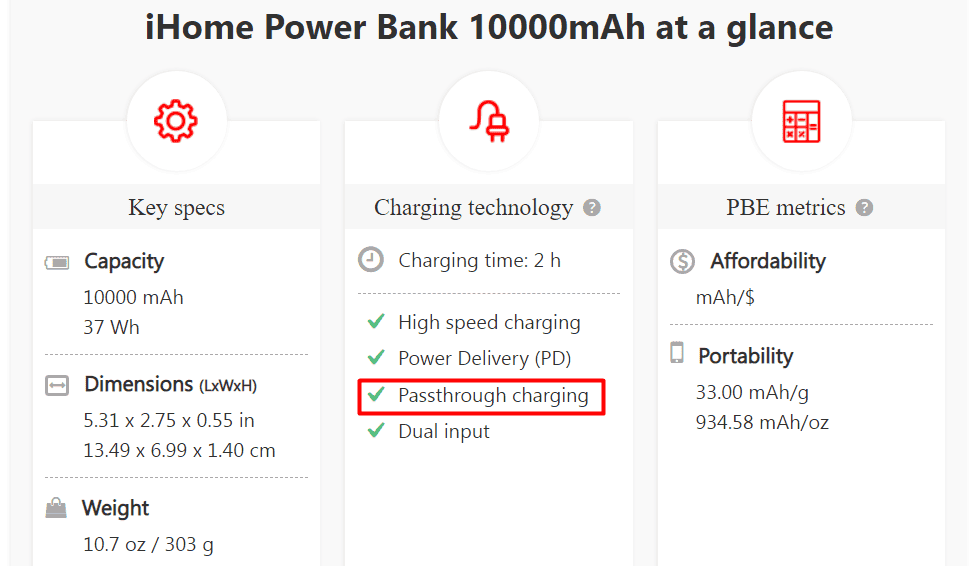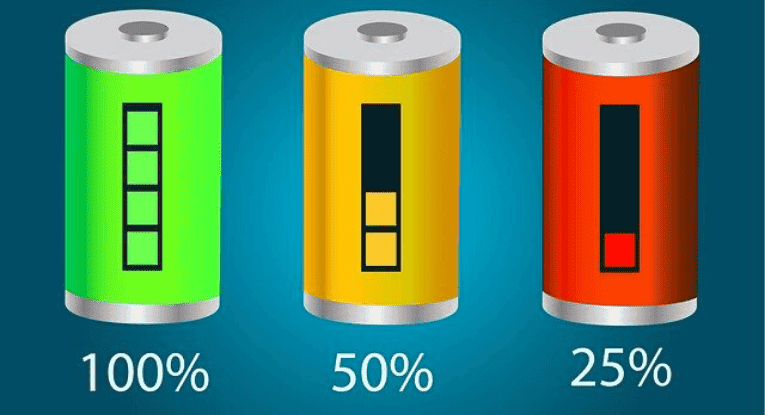Pass-through charging is one of the most common features that portable chargers come with. Although the naming is pretty intuitive, we wanted to dive a bit deeper and shed some more light on this topic.
What is Pass-through Charging?
Pass-through charging is, in the simplest terms, a technology built into various devices that allows other devices to be connected and recharged while the original one is plugged into a power supply outlet and charging itself. This technology makes use of a series of power-regulating circuits that match the amount of energy needed by a connected device to the power being drawn out from the wall outlet.
This technology is widely used in power banks, power stations, and other portable batteries. But other devices such as USB charging docks, docking stations, or even laptops can feature it as well. Basically, any device that will charge other connected devices while itself being plugged in uses one form of pass-through charging.
Some advanced portable power sources will be able to charge multiple devices simultaneously while charging themselves. Furthermore, they would supply each of those devices with exactly how much power each of them needs.
How Does Pass-through Charging Actually Work?
Pass-through charging, a feature found in many power banks and other portable charging devices, allows for the simultaneous charging of the power bank and a connected device. This process involves a complex interplay of electrical circuits and power management protocols. Here’s a more detailed look at the underlying technology:
Basic Concept
At its core, pass-through charging involves two primary processes: charging the power bank’s internal battery and simultaneously providing power to external devices connected to it. This dual functionality is achieved through custom circuit design.
Circuit Design and Operation
- Dual Circuit Pathways: Power banks with dual-circuit pass-through capability are designed with separate circuit pathways for charging and discharging. These pathways allow for the concurrent flow of electricity in two directions: into the power bank (charging) and out to the connected device (discharging).
- Power Flow Management: When connected to an external power source, the power bank receives electrical current. This current is managed by an integrated circuit (IC) controller, which directs the flow of electricity. The IC prioritizes charging the power bank’s battery while simultaneously allocating power to the connected device.
Direct vs. Charge-Discharge Pass-Through:
- Direct Pass-through: In this mode, the external power directly charges the connected device, bypassing the power bank’s battery. This method is more efficient as it reduces energy loss and speeds up the charging process for the external device.
- Charge-Discharge Pass-through: Here, the power bank’s battery is charged first. Once charged, it begins to discharge, providing power to the connected device. This method involves more energy conversion steps, leading to some efficiency loss.
Voltage and Current Regulation
The power bank’s IC also plays a crucial role in regulating voltage and current. It ensures that the connected device receives the correct amount of power, preventing overcharging or undercharging. This regulation is crucial for maintaining the health and longevity of both the power bank’s battery and the connected device.
Heat Management
Pass-through charging generates heat due to the simultaneous charging and discharging processes. Power banks are equipped with heat dissipation mechanisms and safety protocols to manage this heat. Excessive heat can lead to reduced efficiency and potential damage to the device and battery.
Limitations and Efficiency
While pass-through charging is convenient, it’s important to note that it may not be as efficient as charging the power bank and the device separately. The split of power between charging the power bank and the connected device can result in slower charging times for both.
When to Use Pass-through Charging
Simultaneous charging is not actually needed in most use cases. However, there are some situations that showcase the benefits of pass-through charging:
- There’s a lack of power outlets. If you only have a single wall outlet available and you need to charge your portable power source and phone at the same time, then pass-through is a great option.
- There’s a lack of chargers. You may be in a situation with plenty of wall outlets, but you have just a single charger at hand for multiple devices, including the power bank.
- You’re using the power bank as a backup in case power goes out. In some cases, you may want a device to run in case of a power downtime. For example a video camera. So you can hook it up to a portable power bank that can function as a temporary backup until the power supply comes back on.
All in all, this is a great way to keep all your devices charged by using only a single power source.
How to Activate Pass-through Charging in a Power Bank
Not all power banks are built in the exact same way. So the best way to find out how to activate the pass-through charging feature in a specific power bank is to read the user manual. If you don’t have it anymore, you can usually find it online by searching after the exact power bank name and then ‘user manual’ in quotes.
However, generally speaking, there are two types of activation:
- Manual activation. This can be done by pressing the power button in a specific way (long press, 3 consecutive short presses, etc).
- Auto activation. Some power banks will automatically turn the pass-through charging feature on once they sense power coming from the input port but also power being drawn out from one or more of the output USB ports.
Power Banks With Pass-through Charging
I previously put together a list with pass-through power banks. But you can do a manual check as well. We list it among the rest of the key features of our individual product reviews from our review section, as you can see below:

FAQs
Can pass-through charging affect battery life?
Generally speaking, pass-through charging will not have a noticeable negative effect on battery life if used sparingly. However, if used intensively, it might affect the battery lifespan of the portable charger itself. This can happen because pass-through charging generally produces extra heat and this is an important factor that can degrade battery life, even in the case of the most durable power bank.
A portable power bank that supports pass-through charging is not built with the aim of this feature being constantly turned on. So if you have a specific use case that requires this, please also take into consideration that your portable charger might not last as long.
Does pass-through charging affect charging speeds?
It is quite possible for pass-through charging to negatively affect charging speeds. One reason for it would be the fact that the power from the outlet will need to be split up between multiple devices instead of just a single one. If the maximum requirement of the connected devices is more than what the power source can provide, then you’ll see a decrease in charging speeds.
Another factor that can slow down charging is heat build-up. As mentioned before, pass-through charging generates extra heat during the process. This makes charging less efficient, thus it might lead to decreased charging speeds. This can also happen during wireless charging, for example.
Overall, you can expect any device connected to a battery pack whilst it’s also recharging, to get charged at a slower rate than compared to using a dedicated high-speed charging brick.
Can a power bank with pass-through charging function as a UPS?
The majority of power banks that come with pass-through charging cannot function as a traditional UPS. That’s because when the main power goes out, it will take them a very short period of time until the battery kicks in. Although this might be shorter than one second, some devices will lose connectivity and restart.
However, there are a few power bank manufacturers that took this into consideration and implemented a UPS feature in their products. So if you’re looking for such a device, make sure it clearly states on the product page the fact that it can serve as a UPS. These types of power banks are not that common, but they do exist.
